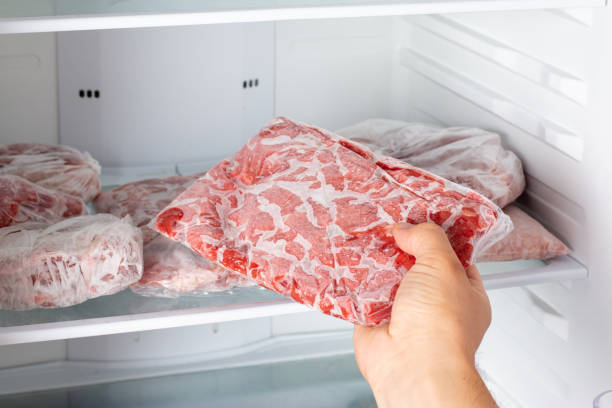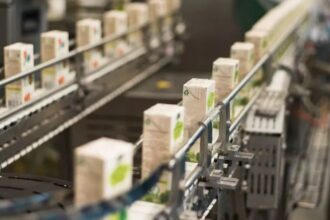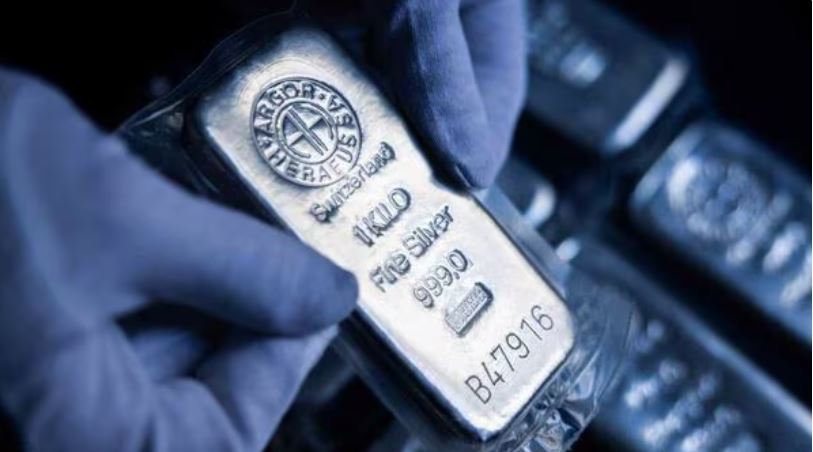When it comes to freezing meat and other perishable foods, the method of freezing is just as important as the temperature. With growing demand for high-quality frozen products, professionals in the food industry need to understand the ins and outs of freezing techniques to maintain flavor, texture, and overall quality. The frozen meat market size is expected to grow and reach USD 115.76 billion by 2030, as frozen food is a reliable choice for the majority of working individuals. Flash-freezing and traditional freezing are two common methods, each with its own set of advantages. But which one really delivers the best results?
Let’s break down flash-freezing vs. traditional freezing so you can make an informed choice for your frozen meat business.
What is Flash-Freezing?
Flash-freezing is a method where food is rapidly frozen at an ultra-low temperature, typically around -30°F or colder, in a very short amount of time. This process typically involves placing food into a blast freezer or similar equipment that can freeze it quickly and uniformly. Because of this rapid freezing, flash-freezing prevents the formation of large ice crystals, which can cause damage to the structure of the food.
What is Traditional Freezing?
Traditional freezing, on the other hand, is a slower process. Traditional freezing is still used in many meat packing plants and commercial kitchens where large cuts of meat are frozen in bulk using walk-in freezers. However, the slower process can negatively affect the cellular structure of meat, making it less appealing after thawing.
The Key Differences Between Flash-Freezing and Traditional Freezing
- Speed of Freezing
Flash-freezing is, as the name suggests, much faster than traditional freezing. It typically takes just a few minutes for the temperature to drop to freezing levels. In contrast, traditional freezing can take several hours or even days, depending on the size of the food item and the freezer’s capacity.
- Ice Crystal Formation
One of the most significant differences between the two methods is the size of the ice crystals formed. In meat, large ice crystals can rupture muscle fibers, leading to dry, chewy textures and juice loss during cooking. This is especially problematic in cuts like steak or chicken breast, where mouthfeel is critical. Flash-freezing results in smaller, finer ice crystals, which cause less damage to the food’s cellular structure. This preserves the food’s texture, moisture, and overall integrity. In contrast, traditional freezing creates larger ice crystals that can puncture cell walls, leading to a loss of moisture and a mushier texture once thawed.
- Quality Preservation
Flash-freezing helps maintain the original texture, flavor, and nutritional value of the product because of its speed. For frozen meat products, this means customers receive beef, poultry, or pork that cooks and tastes much closer to fresh meat. Flash-freezing can be the difference between a premium steak and a disappointing one.
Traditional freezing, due to the formation of large ice crystals, often results in a product that suffers from freezer burn, dryness, and compromised taste.
- Nutritional Value
While freezing, in general, helps preserve the nutritional content of food, flash-freezing does a better job of locking in vitamins, minerals, and nutrients. The slower freezing process in traditional freezing can lead to more nutrient loss over time, especially with more delicate foods like fruits, vegetables, and fish.
- Storage Time
Flash-frozen meat tend to have a longer shelf life than traditionally frozen products. Flash-freezing also reduces the likelihood of freezer burn, which can discolor and dehydrate meat, especially when stored for extended periods. This makes it ideal for products intended for export or long supply chains.
On the other hand, traditionally frozen meat may lose quality more quickly, especially if they are stored for extended periods or exposed to temperature fluctuations.
Key Differences Summarized:
| Feature | Flash Freezing | Traditional Freezing |
| Speed | Extremely rapid (minutes) | Slower (hours) |
| Ice Crystals | Small, minimal damage | Large, potential cell damage |
| Quality | Preserves flavor, texture, and nutrients well | Can lead to some loss of flavor and texture |
| Nutrients | Retains nutrients better | May lose some nutrients over time |
Which Freezing Method is Better for Your Business?
- Flash-Freezing: The Industry Standard for Quality
For meat processors, distributors, and foodservice providers, choosing the right freezing method affects not only product quality but also compliance with food safety standards, inventory turnover, and customer satisfaction. Therefore, flash-freezing is the clear winner. Here is why:
- Improved Product Quality: Flash-freezing maintains the integrity of food better than traditional freezing. Whether you are freezing high-quality meats, seafood, or even prepared meals, flash-freezing helps to retain the texture, flavor, and moisture.
- Consumer Satisfaction: For companies in the foodservice or retail industries, offering flash-frozen products means delivering a superior eating experience. Consumers and chefs alike value fresh-tasting food, and flash-freezing helps achieve that.
- Longer Shelf Life: Flash-freezing can extend the shelf life of your products, minimizing waste and reducing the risk of product loss due to freezer burn or quality degradation. This is particularly crucial for businesses that operate on a larger scale and need to manage inventory efficiently.
- Better Nutritional Retention: Flash-freezing helps preserve more nutrients, which is an added bonus for health-conscious consumers.
Traditional Freezing: A Cost-Effective Option for Bulk Freezing
Traditional freezing may still work for freezing whole carcasses, primal cuts, or processed meatsin large batches. However, it is best used when time sensitivity and texture are not critical.:
- Lower Initial Cost: Traditional freezing is less expensive and more widely available than flash-freezing, making it an attractive option for companies with budget constraints or those freezing large volumes of food.
- Better for Long-Term Storage of Less Delicate Products: If you are freezing items that are not as sensitive to texture or moisture loss, similar to large cuts of meat or certain vegetables, traditional freezing might suffice. However, it is important to monitor storage times to prevent quality degradation.
The Bottom Line: Flash-Freezing for the Win
For businesses committed to offering the highest quality frozen meat products, flash-freezing is the way to go. It ensures better flavor, texture, nutritional retention, and longer shelf life, all of which contribute to customer satisfaction and brand loyalty. While traditional freezing may still be suitable for bulk storage or less delicate products, it does not provide the same level of excellence when it comes to preserving food’s quality over time.
In today’s competitive market, where consumers are increasingly demanding fresh-tasting frozen meat, adopting flash-freezing technology is not just an investment in quality, it is an investment in your brand’s reputation. So, when it comes to freezing, choose the method that best preserves the integrity of your products, and your customers will notice the difference.
















